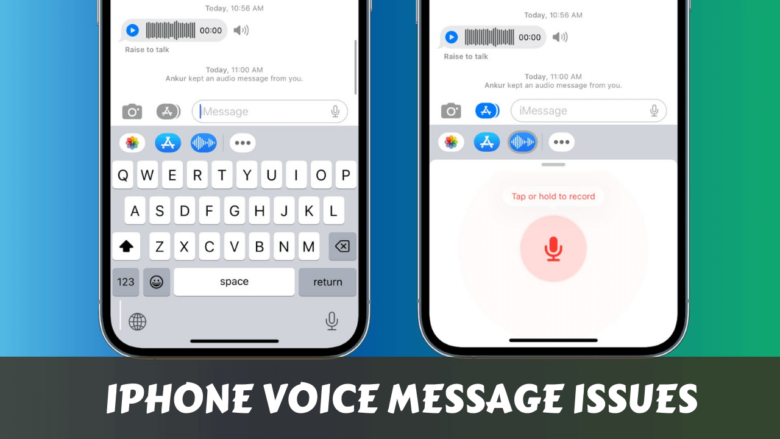“Will I even be able to get out of bed today?”
- Why Your Morning Sets Everything Up
- The MG Morning Blueprint That Actually Works
- Step 1: The Energy Check-In
- Step 2: The Medication Window Strategy
- Step 3: The Graduated Wake-Up
- 💖 You Might Also Like
- Building Your Personal MG Morning Menu
- High Energy Days (7-10 rating)
- Medium Energy Days (4-6 rating)
- Low Energy Days (1-3 rating)
- The Non-Negotiables for MG Mornings
- Hydration First
- Protein-Rich Breakfast
- Stress Check
- What NOT to Do (I’ve Seen These Mistakes Too Many Times)
- Don’t Fight Your Body
- Don’t Skip Medication
- Don’t Plan Important Stuff for Later
- ✨ More Stories for You
- Sample Week: How This Looks in Real Life
- Making It Stick (The Truth About Habit Formation)
- The 3-Option Rule
- Track Patterns, Not Perfection
- Celebrate Small Wins
- Advanced Strategies for Managing Myasthenia Gravis Mornings
- The Energy Banking Method
- The Buddy System
- The Environmental Setup
- 🌟 Don't Miss These Posts
- Frequently Asked Questions
- How long should my morning routine take?
- What if I forget to check my energy level?
- Should I exercise every morning?
- What if my medication makes me nauseous in the morning?
- Can I drink coffee with myasthenia gravis?
- What if I live with family who don’t understand MG?
- The Bottom Line on Morning Routines for Myasthenia Gravis
That’s the first thought that hits you some mornings when you have myasthenia gravis.
Your eyelids feel like they’re made of concrete.
Your arms won’t cooperate.
And you’re already exhausted before the day even starts.
I get it.
Living with this autoimmune condition that causes muscle weakness isn’t a joke.
But here’s what I’ve learned from working with hundreds of people managing neuromuscular conditions…
The right morning routine can be your secret weapon.
Why Your Morning Sets Everything Up
Most people think morning routines are just wellness fluff.
They’re wrong.
When you have myasthenia gravis, your morning routine literally determines if you’ll have energy for the rest of your day.
Or if you’ll be running on empty by noon.
Your muscle strength follows patterns.
For most people with MG, mornings are when you feel strongest.
That’s your golden window.
Waste it, and you’re fighting an uphill battle all day.
The MG Morning Blueprint That Actually Works
Forget those 5 AM miracle morning routines you see on Instagram.
This isn’t about becoming a productivity machine.
It’s about working with your condition, not against it.
Step 1: The Energy Check-In
Before you even think about getting up, do this:
Rate your energy from 1-10 while still in bed.
- 1-3: Today is a gentle day
- 4-6: You can handle moderate activity
- 7-10: Go for your normal routine
This takes 30 seconds.
But it saves you from overcommitting and crashing later.
Sarah, one of my clients, used to push through “bad MG days” anyway.
She’d end up so fatigued she couldn’t function for the next two days.
Now she adjusts her entire day based on that morning number.
Game changer.
Step 2: The Medication Window Strategy
Your medication timing is everything.
Here’s what works:
- Take your first dose as soon as you wake up
- Set a timer for when it kicks in (usually 30-60 minutes)
- Use that waiting time for gentle prep work
- Plan your most important tasks for when meds peak
Don’t try to be a hero and skip doses.
Your muscles need that chemical support.
Period.
Step 3: The Graduated Wake-Up
This isn’t about jumping out of bed like a Navy SEAL.
Try this instead:
- Gentle stretches in bed (5 minutes)
- Sit on edge of bed (2 minutes)
- Stand slowly (let your body adjust)
- Light movement (walking to bathroom)
Your nervous system needs time to boot up.
Especially when you’re managing an autoimmune condition.
Rush it, and you’ll pay the price.
💖 You Might Also Like
Building Your Personal MG Morning Menu
Not every day will be the same.
That’s why you need options, not rigid rules.
High Energy Days (7-10 rating)
When you’re feeling strong, you can handle more:
The Full Routine:
- Medication + 30-minute wait
- Gentle exercise (15-20 minutes)
- Nutritious breakfast (protein-focused)
- Plan your day (5 minutes)
- One important task while energy is peak
Medium Energy Days (4-6 rating)
Scale back, but stay consistent:
The Moderate Routine:
- Medication + wait time
- Light stretching (10 minutes)
- Simple breakfast (something easy to prepare)
- Prioritize top 3 tasks for the day
- Rest breaks built in
Low Energy Days (1-3 rating)
Give yourself permission to do less:
The Gentle Routine:
- Medication only
- Stay in comfortable clothes
- Easy breakfast (pre-prepared or delivery)
- One small win (make bed, send one email)
- Plan rest as your main activity
The Non-Negotiables for MG Mornings
Some things matter no matter what energy level you’re at:
Hydration First
Your muscles need water to function.
Dehydration makes muscle weakness worse.
Keep a water bottle by your bed.
Drink 16-20 oz as soon as you wake up.
Protein-Rich Breakfast
Your body is rebuilding muscle tissue overnight.
Give it the building blocks it needs:
- Eggs (easy to digest)
- Greek yogurt with berries
- Protein smoothie (when chewing is hard)
- Nut butter on toast
Skip the sugar crashes.
Your energy is precious.
Stress Check
Stress makes MG symptoms worse.
Period.
Quick stress busters:
- 5 deep breaths
- One thing you’re grateful for
- Text someone you love
- Put on music you enjoy
What NOT to Do (I’ve Seen These Mistakes Too Many Times)
Don’t Fight Your Body
I had a client who insisted on working out hard every morning.
Even on low-energy days.
She ended up in the ER twice from exhaustion.
Your body is giving you signals.
Listen to them.
Don’t Skip Medication
“I wanted to see if I could handle it naturally today.”
Bad idea.
Your medication keeps your autoimmune condition managed.
Skipping doses creates unpredictable symptoms.
Don’t Plan Important Stuff for Later
If you feel good at 8 AM, don’t save important tasks for 3 PM.
By then, you might be running on empty.
Front-load your day with what matters most.
✨ More Stories for You
Sample Week: How This Looks in Real Life
Let me show you exactly how this plays out:
Monday: Energy 8/10
- 6:30 AM: Medication
- 7:00 AM: 20-minute walk
- 7:30 AM: Protein breakfast
- 8:00 AM: Tackle work project (high focus task)
Tuesday: Energy 4/10
- 7:00 AM: Medication
- 7:30 AM: Light stretching in bed
- 8:00 AM: Simple breakfast
- 8:30 AM: One easy task, then rest
Wednesday: Energy 2/10
- 8:00 AM: Medication only
- 9:00 AM: Delivered breakfast
- 9:30 AM: Made bed (small win)
- Rest of day: Pure recovery mode
See the pattern?
Flexibility based on your body’s signals.
Not some arbitrary schedule.
Making It Stick (The Truth About Habit Formation)
Most advice tells you to do the same thing every day for 30 days.
That doesn’t work when you have a condition with unpredictable symptoms.
Here’s what does work:
The 3-Option Rule
Always have 3 versions of your routine:
- Full version (high energy)
- Medium version (moderate energy)
- Minimal version (low energy)
Track Patterns, Not Perfection
Keep a simple log:
- Energy rating
- Which routine you used
- How you felt at end of day
You’ll start seeing patterns.
Maybe you have more energy on certain days of the week.
Or after eating specific foods.
Use that data.
Celebrate Small Wins
Did you remember to take medication on time?
Win.
Did you drink water first thing?
Win.
Did you listen to your body instead of pushing through?
Huge win.
Advanced Strategies for Managing Myasthenia Gravis Mornings
Once you’ve got the basics down, try these:
The Energy Banking Method
On high-energy mornings, do a little prep for low-energy days:
- Prep breakfast for tomorrow
- Lay out clothes
- Organize medications
- Write encouraging notes to future you
The Buddy System
Find someone who checks in with you.
Not to judge.
Just to care.
“How are you feeling this morning?”
“What does your body need today?”
Having support makes everything easier.
The Environmental Setup
Make your space work for you:
- Medication visible and organized
- Water bottle by the bed
- Comfortable clothes easy to reach
- Phone charger within arm’s reach
Remove friction wherever possible.
🌟 Don't Miss These Posts
Frequently Asked Questions
How long should my morning routine take?
It depends on your energy level.
High energy days: 45-60 minutes
Medium energy days: 20-30 minutes
Low energy days: 10-15 minutes
Quality over quantity.
What if I forget to check my energy level?
Set a phone reminder for the first week.
After that, it becomes automatic.
Your body will start telling you before you even think about it.
Should I exercise every morning?
Only if your energy level supports it.
Movement is good for muscle strength.
But overexertion makes MG symptoms worse.
Listen to your body over any exercise plan.
What if my medication makes me nauseous in the morning?
Talk to your doctor about timing or taking it with food.
Some people do better with medication 30 minutes after eating.
Never adjust without medical guidance.
Can I drink coffee with myasthenia gravis?
Most people can have moderate amounts.
But caffeine affects everyone differently.
Some find it helps with fatigue.
Others notice it makes symptoms worse.
Pay attention to your body’s response.
What if I live with family who don’t understand MG?
Education is key.
Share resources about autoimmune conditions.
Explain that muscle weakness isn’t laziness.
Set boundaries around your morning routine.
Your health comes first.
The Bottom Line on Morning Routines for Myasthenia Gravis
Creating a morning routine with myasthenia gravis isn’t about perfection.
It’s about preparation.
Preparation for the unpredictable.
Preparation for the days when your muscles don’t cooperate.
Preparation for managing an autoimmune condition that most people don’t understand.
Your routine should serve you.
Not stress you out.
Start with one small change.
Maybe it’s just checking your energy level before getting up.
Or keeping water by your bed.
Build slowly.
Adjust constantly.
And remember – there’s no prize for pushing through when your body is asking for rest.
The goal isn’t to beat myasthenia gravis.
It’s to work with it.
To create mornings that set you up for success.
Whatever success looks like for you that day.
And on the really tough days?
Just taking your medication and drinking water counts as a win.
Because you’re still showing up.
Still fighting.
Still creating a morning routine that honors both your condition and your determination to live well with myasthenia gravis.






















